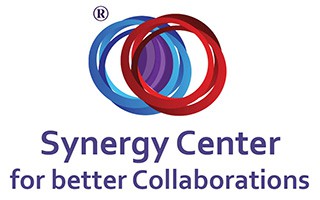In your organization, you can witness and participate in processes, which the synergy assimilation is necessary. No-one’s in a better position to steer forward the synergy process than someone who’s at the apex of organization’s pyramid. Senior managers and proprietors of organizations – chief executive officers (CEOs), directors, co-founders, partners, board members or senior managers – are best placed to handle the synergy process.
Why’s that the case?
It’s because topmost managers understand the organization’s needs and limitations, and they have authority. Besides, synergy process is necessary in situations, which change processes occur. For example, mergers and acquisitions, change in leadership, assimilation of a new procedure, culture or technology, and improvement of customer service experience. For change processes to move forward, there needs to be a strategic vision that guides them, and it comes from the top.
Changes are delicate, sensitive, and painful, and they occur in stages. They require precision and specific focus. The same can be said of the synergy process. Let’s take a look at the first stage of the processes.
Initial Planning and Diagnosis
From time to time, organizations can fall “ill”. Symptoms of an “organizational illness” can manifest in how employees interact and in their perceptions or feelings. As a manager, symptoms are signs of a much deeper issue, which requires a diagnosis. Even before you conduct a diagnosis, there are telltale signs that point to an “illness”. You can read those signs in issues that are always on the minds of your employees.
For example, the following questions:
- Why must we follow these procedures?
- What reality do we aspire to attain?
- What forces contribute to a new reality?
- What’s your take on the process? Do you support or resist it? If not, aren’t you neutral?
Consider the following issues at this stage:
Objectives
Agreeing on what reality you intend to create mutually is the first step. It’s a must, because it determines your target or objective, and what you must do to reach it.
A Case of a Merger Between two Financial Organizations
Dr. Rami Ben-Yshai’s involvement in a merger between two financial organizations required him to perform a service survey immediately after they merged. Ben-Yshai and colleagues discovered that customers of respective organizations felt more “disconnected” after the merger. In addition, they discovered that some customers were confused as to who to contact, and even if they succeeded, no-one returned their calls, and so their issues remained unresolved. There was no interaction, and there’s lack of clarity and one-way communication patterns between the clients and the post-merger organization.
Customer service was clearly in need of a facelift, and the consultants focused on preserving a one-on-one approach to customer’s issues, despite merging. The new organization redefined its vision, goal or purpose, and it was to reduce cases where destructive interactive forms occur in communication patterns with customers. The second purpose was to reduce the feelings or perceptions of “disconnectedness” by the customers. This was important, because the new reality was not in harmony with the feeling of personal service; hence, improvement of organization’s interactions with customers was critical.
Dr. Ben-Yshai and fellow consultants held brainstorming sessions with an aim to improve customer service. The membership drew from across both organizations. The issue that stood the most was responsibility areas, and this guided the team’s definition of a work plan. Dr. Ben-Yshai and his colleagues arranged for a workshop, which involved customers and stakeholders. The purpose of the workshop was to ensure customer’s transition toward the post-merger reality was smooth, and ideas, which affect the changes were heard.
This example shows how it’s important to define your organization’s goal – what you intend to achieve with synergy in a post-merger environment. With a clear and defined goal, employees can internalize, own or assimilate it, adopt it, relate to it, and understand it. The more measurable that goal is, the better. Avoid setting unrealistic or abstract goals.
The logic of this argument can best be seen in Dr. Ben-Yshai’s example. The purpose of the following goal is abstract: “merging the two sales departments in the organization”. A realistic and measurable version of that goal is: “merging the two sales departments into one, so that within six months all salespersons from both pre-merger departments will be capable of selling all products provided by the organization.”
In other words, make the purpose of your goal to be as measurable or quantitative as possible. Add details to your goal; define it more. For example, a more detailed version of this goal: “our objective is to improve the service offered by the organization,” is: “Our objective is to achieve improvement in the index for satisfaction in at least two areas within a year.” The second goal includes a time framework for the new reality. It’s important to address every aspect of synergy, giving consideration to their importance for the new reality.
Resources
Top managers and owners understand organization’s needs and limitations better than anyone else. They define organization’s mission and vision, and create strategies based on them. The measurability of a goal depends on what resources the organization has at disposal at a particular time. Changes aren’t chance occurrences – they occur, because of planning, execution and maintenance. It’s important that you evaluate what you have, whether it be external, internal or supporting process.
In Summary…
There are two issues you must consider when planning and troubleshooting problems with your organization, especially after a change process. These are your objectives and resources. They are very important to consider during and after mergers and acquisitions, assimilation of new culture, technology or procedure, change in leadership, improvement of customer service experience, an





ergfir nolikz
9 Jan 2019Just about all of whatever you mention is astonishingly accurate and that makes me ponder the reason why I hadn’t looked at this in this light previously. Your article really did switch the light on for me personally as far as this issue goes. But at this time there is 1 factor I am not necessarily too cozy with so while I make an effort to reconcile that with the actual central theme of your point, allow me see just what all the rest of your visitors have to point out.Very well done.